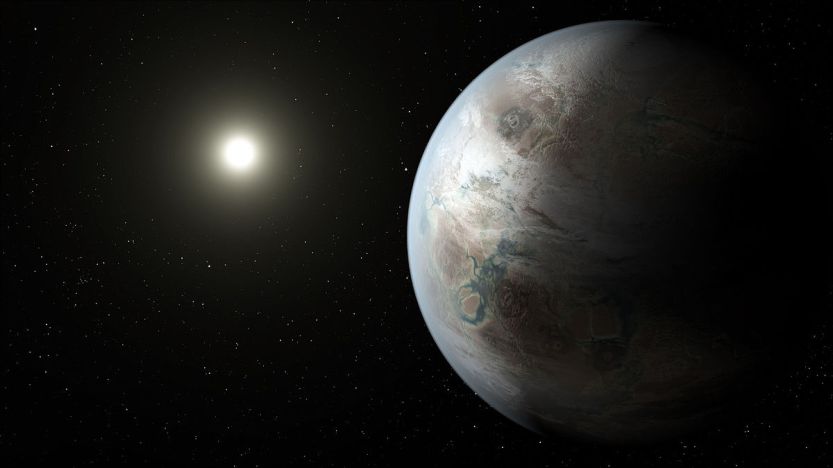It has been 20 years since the first exoplanet – a planet that orbits a star other than the Sun – was discovered in 1995. Currently, we are aware of the existence of 1,879 exoplanets. As many as 1,033 of those have been discovered by the Kepler Mission. Launched in 2009, Kepler is a space observatory designed by NASA to survey a portion of our region of the Milky Way to discover exoplanets. It does so by monitoring the brightness of stars with a photometer, an instrument that measures light intensity. Periodic tiny changes in brightness may be caused by an exoplanet that crosses in front of its host star. This detection method – transit method – allows us also to estimate the size of the exoplanet, and the period and size of its orbits.
On July 23, NASA announced the discovery of exoplanet Kepler-452b: “Kepler” for being discovered by the Kepler Mission, “452” for being the 452nd planetary system confirmed during the course of the mission, and “b” because it is the first planet discovered in the system. Kepler-452b has been labeled as the most Earth-like planet to date. Now, what does that mean? And, how accurate is that?
This is what we know about Kepler-452b. Its radius is 60% larger than the Earth’s radius and its orbit is slightly larger than the Earth’s orbit and still in the habitable zone – the region around a star where planets can support liquid water. It is orbiting a G2 star like our Sun and it does so in 385 Earth days. This star is 6 billion years old, 1.5 billion years older than our Sun, and because of this, it is also larger and brighter. It could by now, for example, have evaporated Kepler-452b oceans, if they were ever there. So, is this an Earth-like planet? In order to answer this better we would need to know its mass, but we currently do not.
This is what we do not know but we can try to guess. Our understanding of planetary science suggests that there is a slightly better than even odds of it having a rocky surface and being 5 times heavier than Earth, and thus all the hopeful artist renditions including lakes, mountains and volcanoes. At this point, then, we cannot conclude Kepler-452b is an older cousin of the Earth. It could also very well be a gaseous older cousin of Neptune.
The ultimate goal is to find a planet that can host some kind of complex life. Before Kepler-452b, our best candidate was Kepler-186f. This planet is only 10% larger than Earth, but orbits around a much fainter yet more stable M star. Nevertheless, if finding complex life is our ultimate goal, these stars may be our best candidates since they account for as much as about 75% of the galaxy’s stars.
Kepler-186f is about 500 light years away. Kepler-452b is about 1,400 light years away. New Horizons just reached Pluto, about five light hours away, after almost a ten year journey. It is obvious we are not going to be visiting any of these planets anytime soon. But that does not mean we never will.
One of the permanent exhibitions at the new Patricia and Phillip Frost Museum of Science (opening in downtown Miami’s Museum Park in summer 2016) is being developed around the idea that, with time and working together, humans can overcome any challenge. Named “Feathers to the Stars,” the exhibition will take you on an inspiring journey from the evolution of animal flight, through the development of human flight, to the future of space exploration. The challenge of interstellar travel may look big, but so did going to the Moon thousands of years ago.
Going back to the discovery of Kepler-452b, whether it turns to be more or less Earth-like, is indeed great news. We are getting closer to finding another “Earth” elsewhere in our galaxy. At this point, it is just a matter of time. Kepler data, for example, suggests that there may be 17 billion Earth-sized planets in the disk of the Milky Way alone. Of course, it will take a long time to map it, but we are working on it. In the future, missions like Tess in 2017, will provide more detail on the size, mass, and atmospheres of exoplanets, and missions like the James Webb Space Telescope in 2018, will also provide astonishing detail on the color, seasons, weather and even the vegetation of some exoplanets. Onwards!

